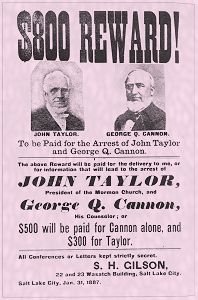
I asked myself this question last night. My job (a law clerk for a legal services organization that serves migrant farmworkers) is constantly inviting me to make comparisons with my missionary service. Like my time as a missionary, I work with Latinos, mostly Mexicans, in the U.S., who live off of field work. Like missionaries, I visit my clients in their homes. Like missionaries, I have to gain my clients' trust. Heck, I even drive a 1999 Sentra like when I was a missionary.
9:00 PM. Last night was a late night. As I met with a client family in a trailer park in a small town in western Minnesota, I couldn't help but be brought back to my mission service. Especially when my client asked me: ¿Cómo aprendiste el español? I explained to him that I was a missionary for my church a few years ago in Arizona. His face glowed with recognition and he said that he had had visits from Mormon elders at his home in Texas. At that point, I would have responded with a follow up question: how did you like it? Or, why did you stop meeting with them? Or, did you ever go to church? Or, would you like me to have the elders here visit you?
I would have. But I stopped myself. I hesitated. It didn't feel right. Somehow, it had the feel of an abuse of authority, or an impermissible blending of church and state, or a violation of the legal services non-solicitation policy, or some other verboten thing. Even though it wasn't strictly any of those things, it felt like something of that nature.
9:15 PM. We finished up our interview and I packed up my client files securely. We shook hands.
¡Que Diós te bendiga! I heard my client exclaim as I got in the car. As I drove to my temporary 3-day-a-week apartment, I wondered why it was that I felt like it was wrong of me to preach the gospel at that moment. The best answer I came up with was that my relationship with my clients, is one of professional advice and counsel, and that the gospel is outside the bounds of that relationship. They come to me to find out what to do. I, after conferring with a licensed attorney, then give them the advice they seek. Even though I explain that I am only a law clerk, not a licensed attorney, they still see me as some kind of professional authority figure. I am entrusted with that authority for the specific purpose of giving them legal advice and counsel. To give, unsolicited, religious counsel would seem like a breach of that trust.
I don't mean that I would never speak about the church with a client. If a client asked me about the church, I would respond. If a client asked me about a non-legal matter, I would be likely to draw on relevant gospel-related experiences. But somehow, it feels wrong to "look for an opening" to share the gospel like I might do in another situation.
But is that just an attempt to artificially separate my gospel self from my professional self? At some level, my understanding of the law is founded on my understanding of justice, which is founded on my understanding of religious truths. The gospel really does infuse everything I do, like it or not. So is my attempt to banish it a Canute-like futility?
Or again, is my sense that it would be wrong to preach the gospel in that situation nothing more than an excuse? Is it really my human reluctance to share personal things (what could be more personal than religion) with people I've just met? Maybe I'm justifying after the fact my failure to share the gospel by rationalizing that I probably shouldn't have anyway.
Or is my hunch right? Is it unethical in some situations to preach the gospel?
I know that sometimes it is illegal to preach the gospel. And I suppose that some might argue that given our belief "
in being subject to kings, presidents, rulers, magistrates, and obeying honoring and sustaining the law," the very fact that it is illegal makes it wrong. But I can't accept that as an absolute. That would mean that
Daniel and
the three Hebrew children were wrong to disobey their king. It would also mean that
Helmut Hubner was wrong to oppose Hitler. Scripture and conscience don't allow those conclusions for me.
Maybe a discussion of "ethical" would be helpful. I've always liked Kant's expression that it is unethical to use a human being for the benefit of another because it is a nice critique of hard materialist utilitarianism. I'm not sure how that relates to my question, though. Preaching the gospel is not using anyone. I suppose I am using the situation, but it is not for my benefit, but for the benefit of the other. Then again, perhaps I am not qualified to decide what is in another's best interest because that would rob him of a sacred autonomy. A utilitarian ethicist would simply balance the potential harm from me preaching the gospel against the potential good it would do. But this doesn't work here because the potential good is infinite,
great enough to justify the spilling of God's blood. How can you balance anything against infinity?
Ethics is weird for me because I feel like I have a pretty strong sense of right and wrong, but it is highly intuitive sense, not a rational sense. For me, the abuse or misuse of authority of authority is important to ethics. The idea of trust and its betrayal is also an important ingredient. Maybe this idea subsumes the former; a misuse of authority is fundamentally a betrayal of trust. If it is unethical to preach the gospel, maybe it is ethics that is flawed. Ethics for me is a matter of conscience, but is defined to most of the world by philosopher and scholars working in rational proofs.
Should ethics be defined by reason or by intuition? Is religion (and with it the
injunction to preach to all the world) superior to ethics because it is revealed truth rather than merely

rational or intuitive truth? Then again, given what we Mormons believe about the light of Christ, what is the difference between revealed truth and intuitive truth?
Or is it just that there are exceptions to the command to take the gospel to all the world? I don't like the idea of there being exceptions because it might lead us to assume that some people's immediate spiritual salvation is worth less than others' to God. The Lord certainly doesn't qualify it in scriptural language. But then again he also doesn't qualify "thou shalt not kill" and yet we accept that he appears to command Abraham, Joshua, Nephi, and others to do just that. If there are exceptions to the mission to proclaim the gospel, is there a way to recognize these exceptions without giving room to justify laziness in our mission?
But maybe the exceptions idea isn't the right approach. Maybe it's not a matter of
if this particular person or group should hear the gospel, but
when. I think of the
11th hour laborers. The fact that they were called later did not devalue their labor. In fact, their work was worth more to the lord per hour in strict economic terms. Given
what we believe about our post-mortal life, the universalism of the command can still stand even if current circumstances render it impossible, impractical, or even unethical.
But there's always that nagging voice in the back of your mind, telling you that you're still just trying to justify yourself.
 today's cultural flotsam. Here are my picks of the top five:
today's cultural flotsam. Here are my picks of the top five:
























